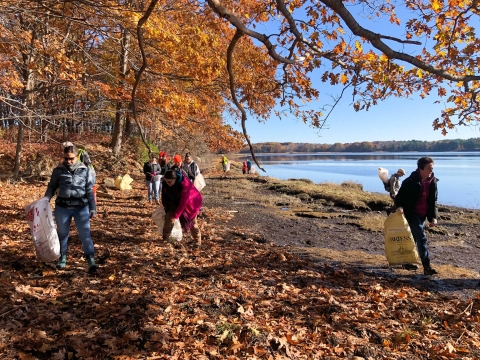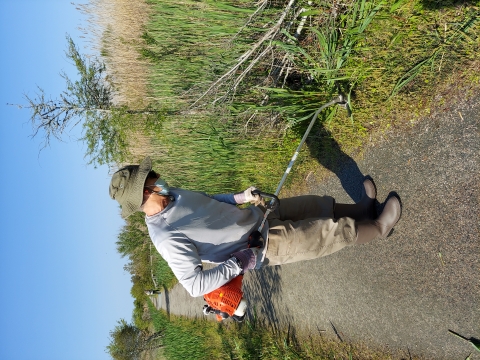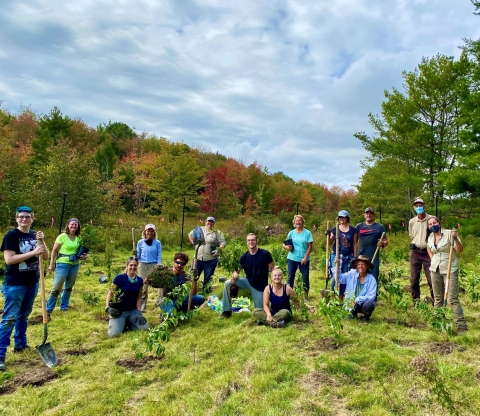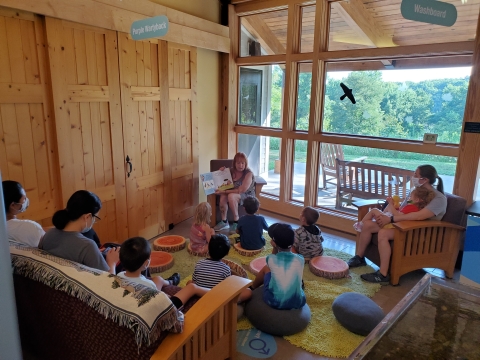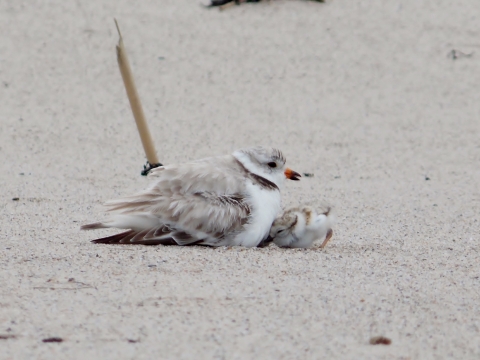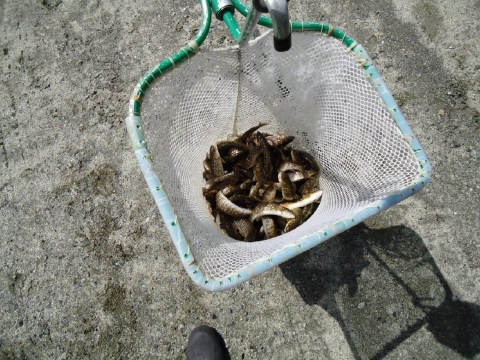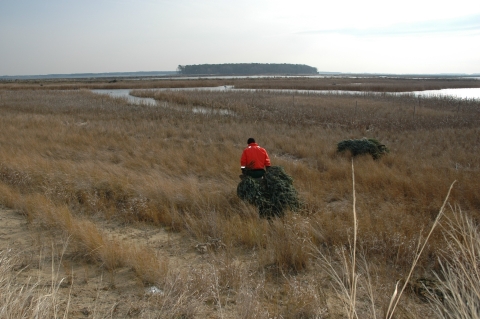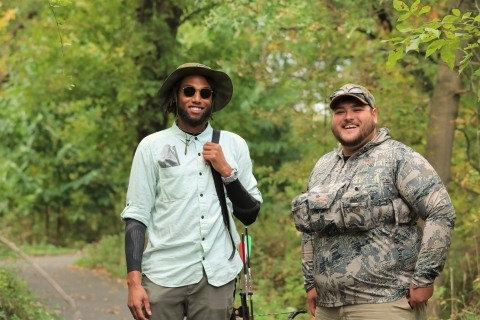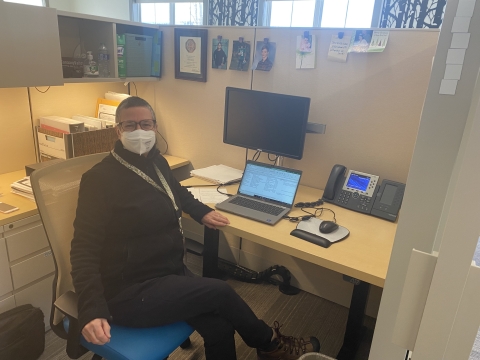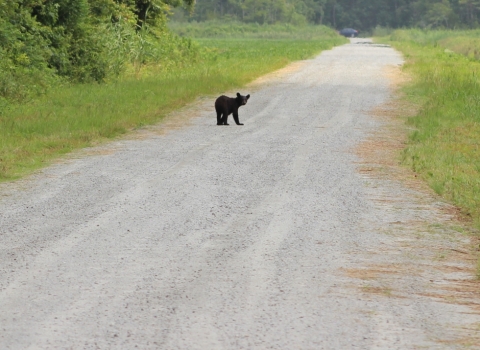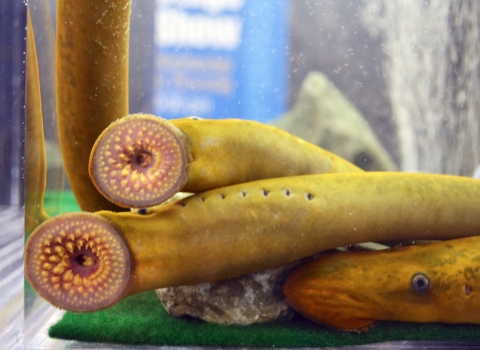Happy Volunteer Week to all our amazing volunteers! We may be biased, but we consider the U.S. Fish and Wildlife Service to be one of the most exciting, rewarding and downright fun organizations you can volunteer for. Want to join? Click here to learn more!
The days and weeks seem to fly by faster and faster each year, so the old saying remains the same: Time is one of the most valuable things we as humans can give one another. In Fiscal Year 2021, our region’s 2,884 volunteers gave a whole lot of it – 117,535 hours to be exact. Although it’s difficult to put a dollar sign on the amazing talent and passion our volunteers bring each year, the value of those hours is estimated at an astounding $3,354,456!
A quantity of that magnitude takes many forms – all equally valuable to our conservation mission. To celebrate Volunteer Week, let’s talk about all the great work that was accomplished in the past fiscal year thanks to the talent and generosity of our volunteers.
Taking out the trash
Keeping our public lands maintained is a year-round effort, and clearing downed trees and trash clean-ups are a routine part of the job. Volunteers across the region consistently met the challenge this past year, helping to tidy up trails and remove tons (literally) of debris from shores, marshes, and creeks. You name it, they cleaned it!
Nothing to shrub at
Plants grow fast at our National Wildlife Refuges -- sometimes too fast. Our volunteers were always on the ball, keeping the harmful invasive species invasive species
An invasive species is any plant or animal that has spread or been introduced into a new area where they are, or could, cause harm to the environment, economy, or human, animal, or plant health. Their unwelcome presence can destroy ecosystems and cost millions of dollars.
Learn more about invasive species at bay, and working hard to plant species that make for healthy wildlife habitat. Rachel Carson National Wildlife Refuge alone saw 500 shrubs planted to support the state-endangered New England Cottontail.
Passing along wildlife wisdom
Great conservation requires great education. Volunteers like Vicki Ayers here helped lead special educational programs, teaching kids about everything from pollinator gardens to piping plovers. Through the course of the Fiscal Year, our volunteers inspired thousands of children, both in person and online, to help develop a lifelong love for wildlife and environmental stewardship.
Lifeguards on duty
Speaking of piping plovers, volunteers at Cape May National Wildlife Refuge were part of a huge effort to protect nesting plovers – the first to nest in more than 10 years at the refuge. Volunteers rallied together to monitor chicks from sunrise to sunset for 10 days, watching the nest intently to keep them safe from predatory ghost crabs. One chick even fledged thanks to the group’s dedication, and the volunteers were rewarded with the pleasure of witnessing the chick grow up.
All things fish
Volunteers working with our Fish and Aquatic Conservation Program assisted in stocking fish, egg care, and helped support a great number of species - including endangered species (Atlantic salmon); at risk species (freshwater mussels), and recreational species such as brook trout, American shad, and lake trout. When they weren’t working with fish, volunteers helped with building and grounds maintenance, and even worked with one of our conservation offices to create and improve schoolyard habitat to inspire school children to get out and explore the wonders of nature.
Preserving history
Volunteer work helps give back not only to wildlife, but to the preservation of cultural heritage as well. Here we see volunteers building a protective fence at the iconic Fones Cliffs in Virginia. This piece of land, adjacent to the Rappahannock River Valley National Wildlife Refuge, is the ancestral homeland to the Rappahannock Tribe – the area where the Tribe first encountered Captain John Smith in 1607.
In Spring of 2022, 456 acres of the Fones Cliffs were finally returned to the Tribe centuries after their forced separation from the land. Now, the Rappahannock Tribe will be able to use Fones Cliffs as a way of honoring shared history, retaining their own cultural identity, and working collaboratively with the Service and conservation partners to continue preserving this sacred land for the benefit of wildlife and people.
Keeping the Chesapeake wild
At the Chesapeake Bay Ecological Services Field Office, volunteers donated nearly 100 hours of their time to assist Service biologists with many ecosystem restoration projects at Poplar Island, including planting native vegetation and Christmas tree placement for habitat creation; monarch butterfly tagging; and assisting with aquatic vegetation and wildlife monitoring. The Poplar Island project helps to restore lost island habitat within the Chesapeake Bay, providing excellent nesting areas for colonial waterbirds and shorebirds as well as shallow water habitat for a variety of aquatic species.
Aiming higher
Hunting is a cornerstone of conservation; it funds Service programs, manages wildlife populations, and promotes healthy and sustainable habitat. We’re lucky enough to get the exciting opportunity of introducing first-time hunters to the sport through mentored archery hunting programs at several National Wildlife Refuges. Volunteers – who happen to be trained and certified hunters, too – were there every step of the way, teaching mentees how to hunt safely while keeping their aim steady.
Screentime
Office work might not make you break a sweat, but that certainly doesn’t make it easy! One volunteer at Canaan Valley National Wildlife Refuge contributed more than 100 hours towards organizing and transferring old files to the refuge’s drive. Susan’s work has made document searches more efficient and the refuge staff’s lives far easier!
No matter what the challenge, our volunteers have shown an inspirational level of dedication to fish, wildlife and plant resource conservation. Their hard work helps advance the FWS conservation mission and makes our offices, hatcheries, field stations and communities that much better.
To our volunteers: Thank you for all that you do. We couldn’t do it without you!


